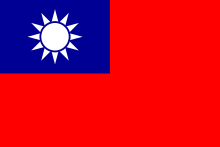
Back قومية صينية Arabic Nacionalismu chinu AST Nacionalisme xinès Catalan Ĉina naciismo Esperanto Nacionalismo chino Spanish Nationalisme chinois French Nacionalismo chinés Galician Nasionalisme Tiongkok ID 중국 국민주의 Korean Хятадын Үндэсний үзэл Mongolian

| Chinese nationalism | |||||||||||
|---|---|---|---|---|---|---|---|---|---|---|---|
| Traditional Chinese | 中國民族主義 | ||||||||||
| Simplified Chinese | 中国民族主义 | ||||||||||
| |||||||||||
| Alternative Chinese name | |||||||||||
| Traditional Chinese | 中華民族主義 | ||||||||||
| Simplified Chinese | 中华民族主义 | ||||||||||
| |||||||||||
Chinese nationalism[a] is a form of nationalism in which asserts that the Chinese people are a nation and promotes the cultural and national unity of all Chinese people. According to Sun Yat-sen's philosophy in the Three Principles of the People, Chinese nationalism is evaluated as multi-ethnic nationalism, which should be distinguished from Han nationalism or local ethnic nationalism.
Modern Chinese nationalism emerged in the late Qing dynasty (1644–1912) in response to the humiliating defeat in the First Sino-Japanese War and the invasion and pillaging of Beijing by the Eight-Nation Alliance. In both cases, the aftermath forced China to pay financial reparations and grant special privileges to foreigners. The nationwide image of China as a superior Celestial Empire at the center of the universe was shattered, and last-minute efforts to modernize the old system were unsuccessful. These last-minute efforts were best exemplified by Liang Qichao, a late Qing reformer who failed to reform the Qing government in 1896 and was later expelled to Japan, where he began work on his ideas of Chinese nationalism.
The effects of World War I continually shaped Chinese nationalism. Despite joining the Allied Powers, China was again severely humiliated by the Versailles Treaty of 1919 which transferred the special privileges given to Germany to the Empire of Japan. This resulted in the May Fourth Movement of 1919, which developed into nationwide protests that saw a surge of Chinese nationalism. Large-scale military campaigns led by the Kuomintang (KMT) during the Warlord Era that overpowered provincial warlords and sharply reduced special privileges for foreigners helped further strengthen and aggrandize a sense of Chinese national identity.


After the Empire of Japan was defeated by Allies in World War II, Chinese nationalism again gained traction as China recovered lost territories previously lost to Japan before the war, including Northeast area and the island of Taiwan. However, the Chinese Civil War, (which had paused due to the Second Sino-Japanese War) had resumed, damaging the image of a unified Chinese identity. The Chinese Communist Party (CCP) was victorious in 1949, as the KMT government retreated to Taiwan. Under Mao Zedong, the CCP began to employ Chinese nationalism as a political tool. Chinese nationalism has become more Han-centric since Xi Jinping assumed power in 2012.
Cite error: There are <ref group=lower-alpha> tags or {{efn}} templates on this page, but the references will not show without a {{reflist|group=lower-alpha}} template or {{notelist}} template (see the help page).